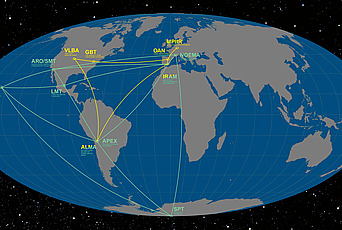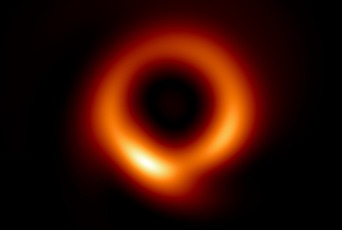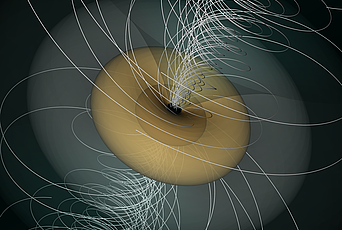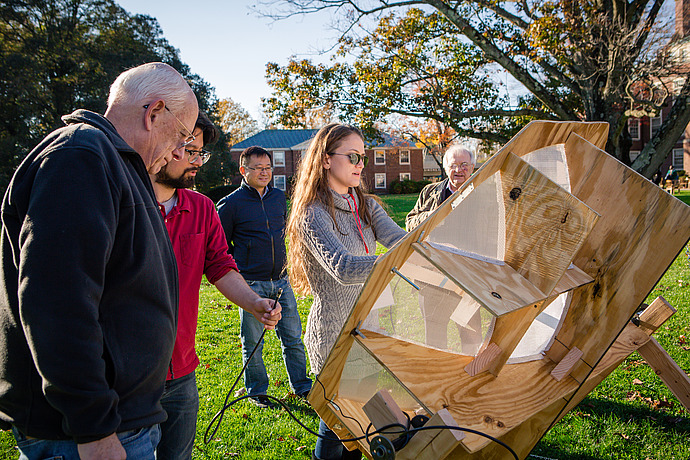
Advancing EHT at IAS
From November 1–3, 2023, the Institute for Advanced Study welcomed astrophysicists from across the world to campus for a workshop focused on improving present understanding of observations from the Event Horizon Telescope (EHT).
The EHT is an international collaboration that harnesses a global network of radio telescopes to observe supermassive black holes. In recent years, EHT researchers have produced images of the environment near black holes on the scale of their event horizons, shedding light on both the black holes themselves as well as how they influence the matter swirling around them.
To better understand the physics that influences how the gas and magnetic fields behave, models of the entire "accretion system" are often created. The recent IAS workshop, organized by George N. Wong, Frank and Peggy Taplin Member in the School of Natural Sciences, and Lia Medeiros, Visitor in the School, focused on “semi-analytic” accretion models. These models employ approximate and computationally inexpensive techniques and can be easily compared to EHT observations.
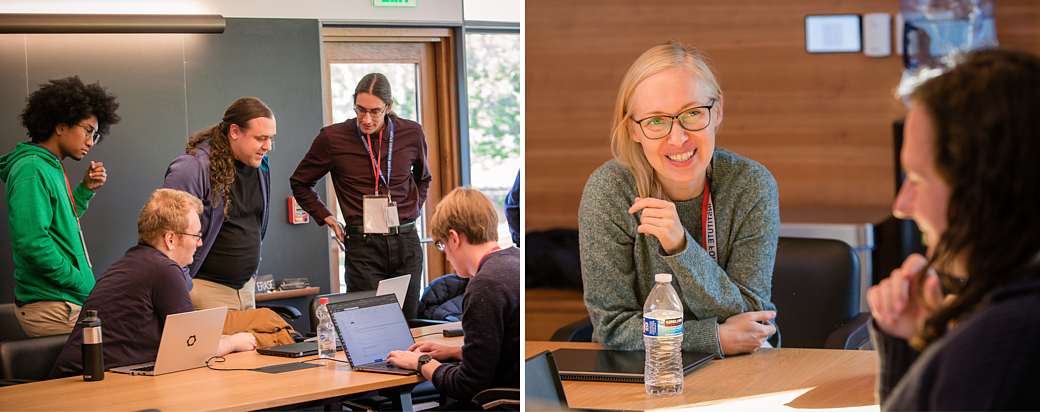
The workshop, which was attended by theoretical physicists from the EHT, IAS, and the surrounding Princeton area, comprised a series of talks about contemporary modeling efforts. The talks were complemented by discussion sessions that sought to identify the key ingredients for an accretion model in terms of both the underlying physics and data from observations.
The second day of the workshop concluded with a special treat for both workshop attendees and the IAS community: a star gazing event. The event gathered several optical telescopes on the main lawn outside Fuld Hall, providing a view of planets, galaxies, and other astronomical objects. To give the observing night true EHT flavor, Wong and Medeiros also constructed a radio telescope that picked up radio waves similar to those that the EHT measures, but at a lower frequency. The telescope, comprising two 1.2-meter diameter parabolic dishes, was built from scratch in Medeiros’s garage and assembled in the basement of Bloomberg Hall on campus.
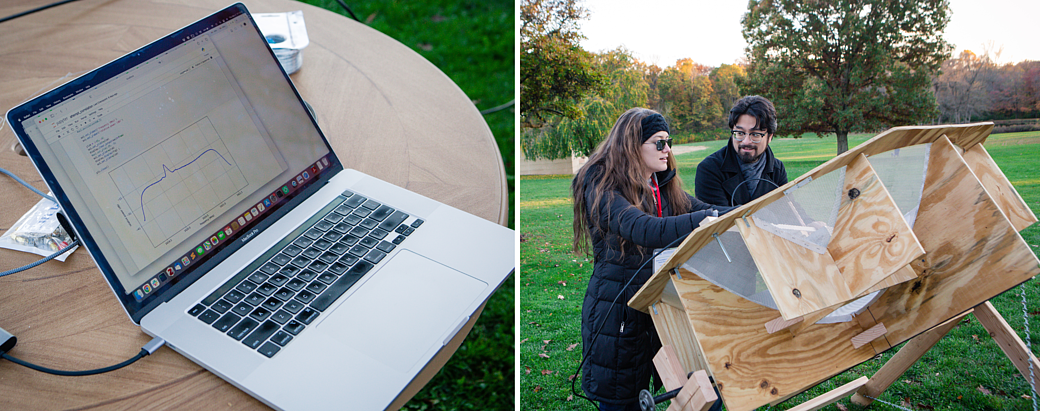
The construction of the telescope enabled Wong and Medeiros to not only learn more about the hardware required for radio observations, but also to educate the wider IAS community about radio astronomy. The public perception of astronomical observations is that it tends to be conducted with optical telescopes, but a lot of astronomy is done with wavelengths that the human eye cannot observe. Wong and Medeiros’s handcrafted radio telescope allowed participants to observe the 21cm emission line from our galaxy produced by neutral hydrogen, the most abundant element in the universe.
The workshop was supported by the Institute for Advanced Study and the Department of Astrophysics at Princeton University.
